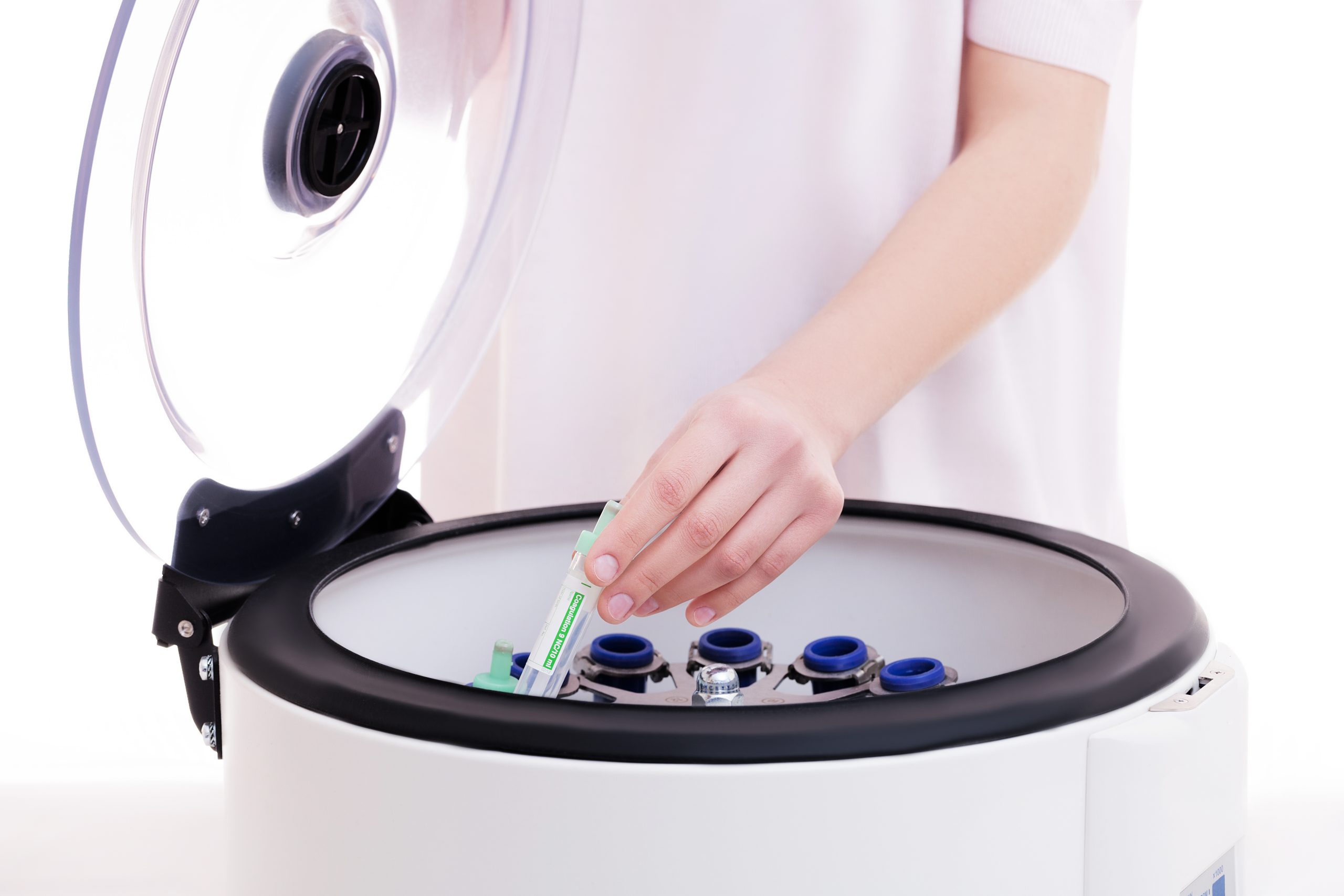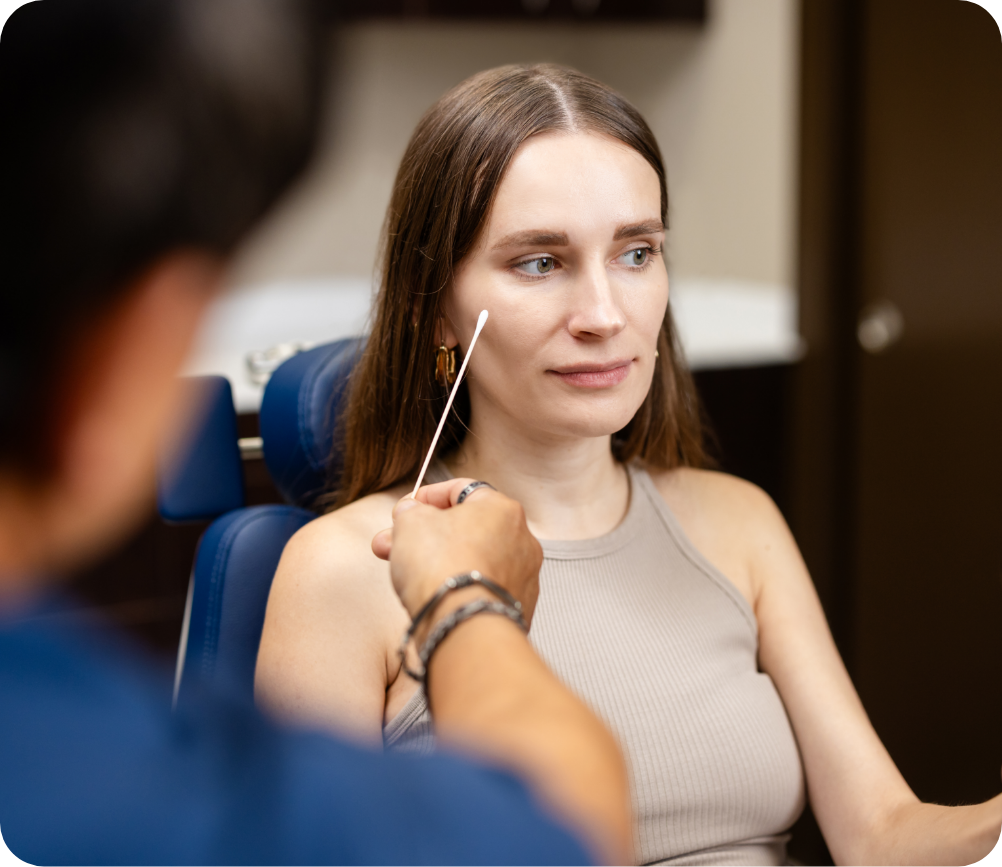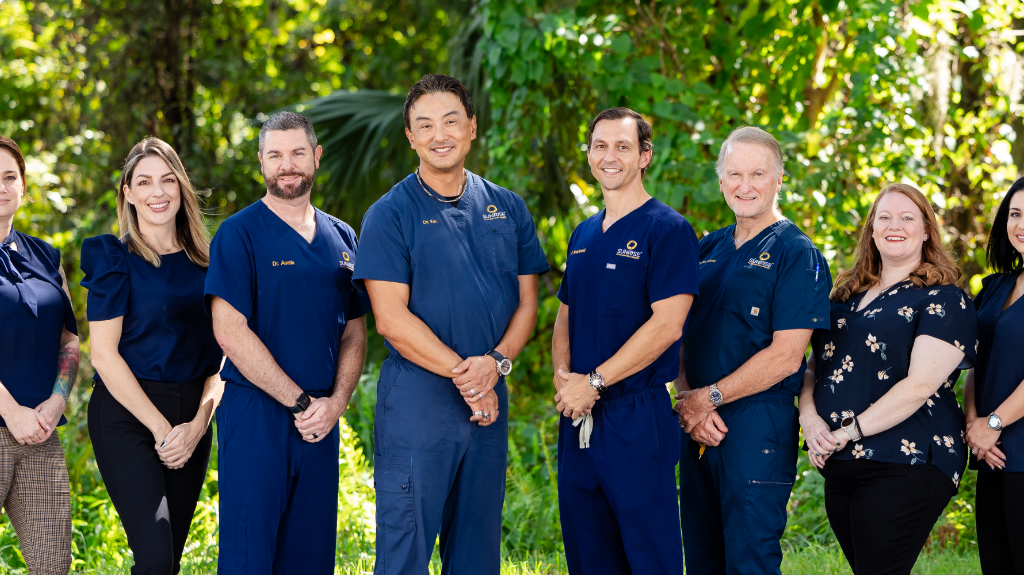
Platelet-rich plasma (PRP) therapy is an effective method for reducing an individual’s recovery time following an oral, periodontal or cosmetic procedure. PRP therapy involves using components of the patient’s blood to encourage healing. Dr. Richard W. Schmid and Dr. King Kim know how beneficial platelet-rich plasma therapy can be, which is why they have been offering PRP therapy to their patients for nearly 15 years.
Platelet Rich Plasma Therapy is Natural
Plasma is one of the components in blood that contains proteins to help with the blood clotting process as well as proteins that are responsible for supporting cell growth. Since the patient’s own blood components are used for PRP therapy, concerns related to injecting a foreign substance or chemicals into the body are eliminated: Furthermore, the blood is the patient’s, therefore, complications associated with the use of platelet-rich plasma are extremely low and side effects are rare.
How is the Platelet Rich Plasma Collected?
PRP is collected through a method of isolation (via centrifugation) and concentration: There are several variations of this method used to attain plasma; however, only one method is outlined below.
Processing whole blood for PRP collection:
- Several tubes of whole blood are obtained from the patient via an intravenous blood draw.
- The tubes of whole blood are placed within a centrifuge. A centrifuge is a piece of equipment that is designed to separate fluids of different densities. This separation is achieved through the application of great force. The centrifuge applies this force with a series of rapid rotations.
- As the centrifugal force is placed on the patient’s pre-drawn tube of whole blood, the lighter particles within the blood separate from the heavier particles.
Following the centrifugation process, the whole blood in the tube is now separated into three layers:
- the upper layer is pale yellow in color and consists mostly of plasma and a few white blood cells (WBC);
- the thin middle layer, which is also yellow in color, consists of WBC; and
- the bottom layer is dark burgundy in color and contains the red blood cells (RBC).
- The plasma and layer of WBC are transferred into sterile tubes and then spun again. This second centrifugation causes the platelet pellets to fall to the bottom of the tube. These pellets are few and burgundy in color.
- The upper 2/3 of the plasma is discarded with the remaining 1/3 being mixed with the platelet pellets: It is this mixture that is injected into the treatment area(s).
- The mixture is injected into the treatment area(s).
How Does Platelet Rich Plasma Help the Body Recover?
Platelets are neither molecules nor cells: They are often referred to as ‘cell fragments:’ Nonetheless, platelets have a variety of interesting biological features. Platelets have more than 1,500 special proteins and growth factors that assist with wound healing and tissue repair. Injecting platelet-rich plasma into damaged tissue stimulates new growth because the growth factors within the PRP are more concentrated, which allows the tissue to heal quicker. Moreover, platelets can reduce inflammation and decrease pain.
PRP Therapy Treatment for Recovery: What to Expect
Blood is drawn on the day that PRP treatment is being performed. Once the process to separate the platelet-rich plasma from the rest of the blood components is complete, the treatment area is cleansed using an antiseptic. A local anesthetic may be used to numb the area and the injection(s) is administered. The entire process takes approximately 30 minutes. However, keep in mind that treatment steps vary depending on the reason the platelet-rich plasma therapy was performed. For example, if PRP therapy is being used following an extraction, the area will already be numb.
The only recovery associated with platelet-rich plasma treatment is the amount of time required by the procedure for which the therapy was used.
At Sunrise Facial and Oral Surgery, we provide our patients with the option of platelet-rich plasma treatment so they can heal faster and enjoy their results sooner. Dr. King Kim and Dr. Richard W. Schmid are dedicated to providing each of their patients with the highest quality of care available in and around Brevard County. If you would like to learn more about the confidence-building and problem-solving oral, periodontal, and facial cosmetic procedures available at Sunrise, contact one of our offices today.
Schedule your initial consultation by calling 321-255-7724 (Rockledge) or 321-725-5377 (Melbourne).


